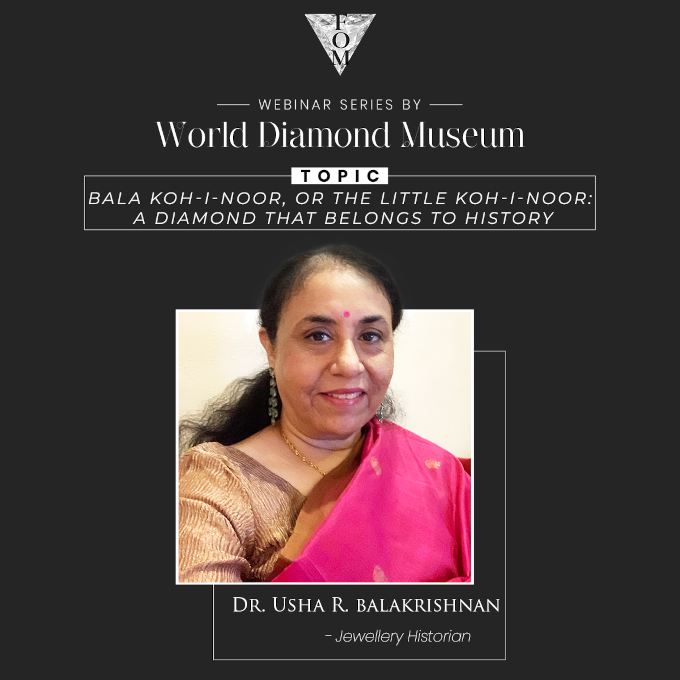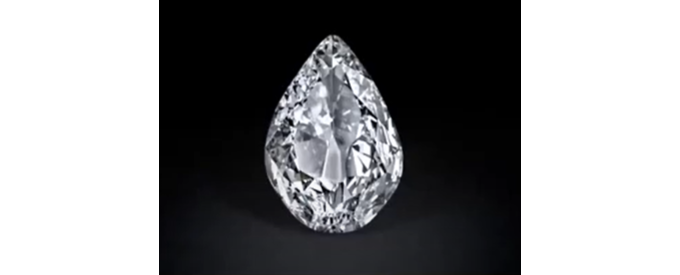
Image credit: World Diamond Museum
The World Diamond Museum recently screened its second webinar series with a presentation by the historian of Indian jewellery Dr Usha Balakrishnan, who is also the chief curator of the World Diamond Museum.
She traced the early history and journey of a diamond that was initially unearthed weighing 450 carats and ranked among the largest diamonds in the world at the time of its discovery.
Originally named Bala Kohinoor or Little Kohinoor, the Golconda Diamond gem, was later renamed The Nizam.
It was once reposed in the treasury of the Nizams of Hyderabad.
The diamond now weighs 120.8 carats.
"It is a Type 2A, D-flawless irregular pear-shaped diamond," she said.
Dr Balakrishnan said the stone was exhibited by the world-renowned gallery Singleton of New York.
It had not been seen in public for more than 100 years.

Image credit: World Diamond Museum
"[The stone] created a flutter in the world of jewellery, after all how does a more than 100-carat Golconda diamond emerge from hiding?" she asked.
"The renowned diamond merchant Julia Edwin … had written more than 100 years ago that …: the birth of an exceptional stone is usually proclaimed to the world and its subsequent travels and adventures are chronicled'…," said Dr Balakrishnan.
She said the stone was brought to her attention about five years before it made its first appearance on the world's stage.
The historian said the diamond was discovered between 1826 and 1830.
It was first seen in the hands of a native child who was playing with it.
The stone, which initially weighed 450 carats, was broken and the smaller piece was sold to a local banker for 70 000 Rupees, which was a huge sum of money in 1830.
She said the larger rough stone was deposited into the treasury of Nasir ud Daular, the fourth Nizam of Hyderabad.
As a great discovery, the rough stone was shown off to many European visitors to the Nizam court.
It was estimated in the 1840s that the stone if cut, would yield a gem weighing about 138.5 carats.
"Although it was not easy to determine if the stone was of pure water that is flawless …the natives of India, particularly the Deccan are too good judges of diamonds and would have not paid the princely sum of 70 000 rupees in 1830 for a fraction of the stone if they had not seen the super gem that lay inside the rough," said Dr Balakrishnan.
The diamond received news coverage in England and it was described in 1848 as much larger than a pigeon egg.
Mathew Nyaungwa, Editor in Chief of the African Bureau, Rough&Polished
